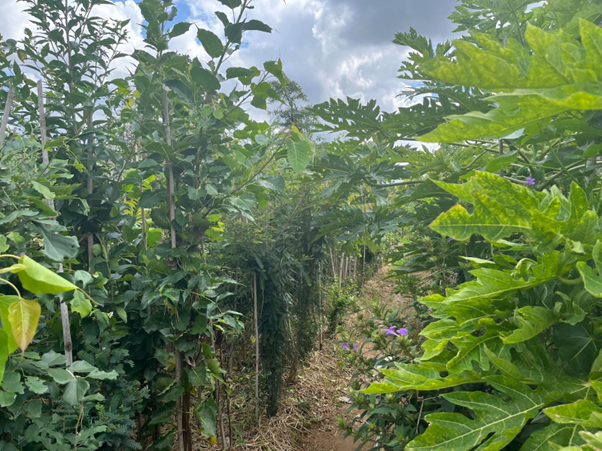But I must explain to you how all this mistaken idea of denouncing pleasure and praising pain was born and will give you a complete account of the system and expound the actual teachings of the great explore
Contact Us
In the 1970s, the Japanese ecologist Akira Miyawaki developed a novel method of forest regeneration aimed primarily at restoring degraded sites and promoting resilience. The method has been adopted across much of the world, mostly to restore tropical forest and also to increase forest cover in urban areas.
It has recently become more popular in Europe, the UK and even India.
Recently, Pehel Foundation, the CSR wing of PNB Housing began working along with BharatCares to re-green the city. The duo involved SayTrees, a social enterprise focussed on increasing the tree cover across India through the Miyawaki method.
In a small plot of land at Anekal, Bengaluru, the team is growing 6300 saplings. They are native varieties like papaya, guava, seethaphal, jasmine, badam and more. What started as small saplings not more than 2 feet tall, today, the saplings are adult trees that are 6-7 feet tall.
In the same manner, the project is also being carried out in Narela, New Delhi. Here 2000 saplings of apple, champa, amla, jungle jalebi, orange, lime, hibiscus, tamarind among others are growing.

The forest provides cleaner air and job opportunities. Even on a sunny day, the houses surrounding the Miyawaki forest are prone to receive more shade and cooler air. For maintaining the plantation site, workers are currently being appointed from the surrounding villages.
The benefits of a Miyawaki forest
Miyawaki forests grow rapidly, increase soil- and forest-biodiversity, increase carbon sequestration, increase forest resilience and reduce maintenance costs.
Ecological benefits
Miyawaki forests have been shown to be more resilient than traditionally planted forests. Research has found that these forests have a much greater biodiversity – above ground and below. Deadwood and leaves are left alone. This provides potential habitat for fungi and invertebrates.
The diversity of plants is attractive to various types of fauna, providing habitat and food for everything from invertebrates to birds to mammals. Miyawaki forests achieve ecological succession within 20 or 30 years, compared to 100-200 years for a traditionally planted forest.
Cost effective
Miyawaki forests often require less initial cost of funds, which may include installing a watering system, labor costs for planting and the first few years of development, the price of saplings, and the price of soil additives.
In the long run after the initial period of growth, investment requirements are little to none. Additionally, the growers can increase the economic value of their forests by incorporating high-value native timber trees and creating “Miyawaki Fruit Forests”, by providing forest tours, nature walks and educational sessions.
Carbon sequestration
Miyawaki technique trees are planted, and they develop much more quickly, accelerating the process of creating forests and absorbing more carbon. The best part of the technique is that after three years saplings become maintenance-free or self-sustainable.
Being capable of rapidly establishing diverse, healthy forests could be crucial in fulfilling international targets and addressing these concerns in light of the current climate change emergency and alarming warnings about worldwide biodiversity loss.
Prevents calamities
Apart from carbon sequestration, Miyawaki forests have also proven effective when used for a specific purpose, such as providing tsunami protection, stabilizing mine dump slopes, and as typhoon protection systems.
Share:

Roshini Muthukumar, a native of Chennai, started her career as a content writer but made a switch to journalism to pursue her passion. She has experience writing about human interest stories, innovative technology, entrepreneurs, research blogs, and more. Previously, Roshini has done internships with The Hindu, Metroplus and worked as a correspondent with The Better India.